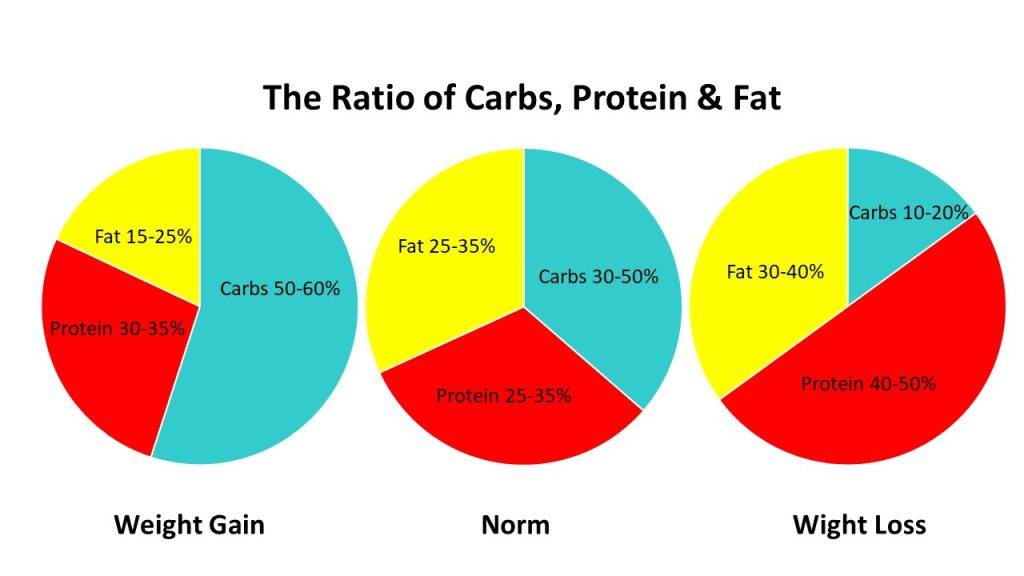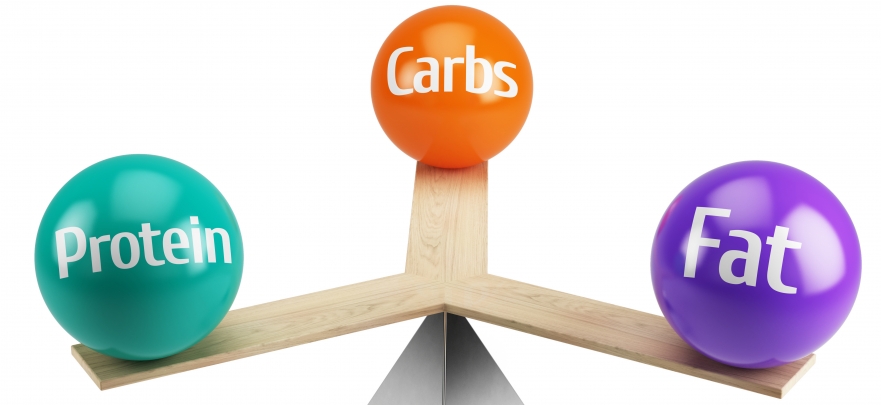What is a balanced diet? It must be composed of carbohydrates, protein, and dietary fats. At the same time, mixing these core food groups in any diet should be carefully considered relative to a healthy weight loss objective.

Carbohydrates are integral for protein tissue synthesis and are stored in our muscles to govern energy production, speed, concentration, stamina, and fluid balance.
Dietary carbohydrates can be segmented into the following three classifications:
Sugars
Sugars are carbohydrates that occur naturally in many foods, or they are added as ingredients to foods and are used by the body for energy.
Simple sugars are monosaccharides, including glucose (dextrose), fructose, and galactose.
The sugar most commonly used as table sugar is sucrose.
This sugar is a disaccharide broken down in the body into fructose and glucose for energy.
There is very little difference between the types of sugar you find in the supermarket (e.g. white, brown, raw, etc.). They are different because of the various processing techniques used in their manufacture.
Experts generally agree that eating excess kilojoules contributes to weight gain.
Being overweight or obese increases the risk of chronic health problems like high blood pressure, type 2 diabetes and heart disease.
Sugar provides the same amount of energy or kilojoules (kJ) per gram as other digestible carbohydrates such as starch found in bread, rice and pasta.
The World Health Organization (WHO) recommends that ‘free’ sugars make up no more than 10% of daily kilojoule intake to prevent unhealthy weight gain and dental caries.
Starches
Starch is the most common carbohydrate in the human diet and is found in many staple foods. The significant sources of starch intake worldwide are cereals;
- Rice
- Wheat
- Maize
- Potatoes
- Cassava
Prepared foods containing starch are bread, pancakes, cereals, noodles, pasta, porridge and tortillas.
Digestive enzymes have problems digesting crystalline structures.
Raw starch is digested poorly in the duodenum and small intestine, while bacterial degradation occurs mainly in the colon.
When starch is cooked, the digestibility is increased.
Before the advent of processed foods, people consumed large amounts of uncooked and unprocessed starch-containing plants, which contained high amounts of resistant starch.
Microbes within the large intestine ferment starch to produce short-chain fatty acids, which are used as energy and support the microbes’ maintenance and growth.
More highly processed foods are easily digested and release more glucose in the small intestine, while less starch reaches the large intestine, and the body absorbs more energy.
Starch can be classified as rapidly digestible, slowly digestible and resistant starch.
Raw starch granules resist digestion by human enzymes and do not break down into glucose in the small intestine – they reach the large intestine and function as prebiotic dietary fibre.
Fibre
Dietary fibre is found mainly in fruits, vegetables, whole grains, and legumes and is best known for preventing or relieving constipation.
Foods containing fibre can provide other health benefits, such as helping to maintain a healthy weight and lowering your risk of diabetes, heart disease and some types of cancer.
Whole carbs or simple carbs refer to unprocessed carbohydrates containing fibre found naturally in food, such as fruits, legumes, potatoes, and whole grains.
Refined carbs, or complex carbs, are foods stripped of fibre.
Protein
Often referred to as the building blocks of tissue, they are composed of amino acids and break down in the body to form muscle mass and metabolic regulation.
Some great protein sources include natural peanut butter, eggs, quinoa, edamame, plain Greek yogurt, black beans, and sunflower seeds.
Dietary Fats
Fats provide our bodies with energy and support cell growth. There are four main classifications of fats in food.
Saturated Fats
Saturated fats are found in animal-based foods like;
- Beef, pork, poultry
- Full-fat dairy products and eggs
- Oils like coconut and palm oil
Because they are typically solid at room temperature and are sometimes called “solid fats.” Saturated fats can cause problems with your cholesterol levels, which can increase your risk of heart disease
Unsaturated Fats
Referred to as “good fats” and are preferred by most health professionals but needed as with most things consumed in moderation.
- Meats, lard, and dairy products
- Trans fats, which are found in packaged baked goods, potato chips and fast food
- Monosaturated fats are found most conveniently in nuts and seeds.
- Polyunsaturated fats, an abundance of which are found in fish, seed oils and oysters
Monounsaturated Fats
Monounsaturated fatty acids, or MUFAs, are a type of unsaturated fat. “Mono,” meaning one, signifies that monounsaturated fats have only one double bond and can be found in;
- Olive oil
- Canola oils
- Avocados
- Nuts such as almonds, hazelnuts, and pecans
- Seeds such as pumpkin and sesame seeds, and peanuts
Polyunsaturated Fats
Polyunsaturated fats are usually liquid at room temperature and are called “oils.” They are found mainly in Sunflower, corn, soybean, flaxseed oils, walnuts, flax seeds, fish, and canola oil. Though higher in monounsaturated fat, they are also a good source of polyunsaturated fat. Omega-3 fats are an essential type of polyunsaturated fat.
What is a balanced diet?
While a mix of protein, fat, and carbohydrates is essential to losing weight, the objective always needs to focus on health. The plan must include regular exercise to achieve the designated goal.
What is a Balanced Diet? Weight Loss Coaching: Yes, please.
[DISPLAY_ULTIMATE_SOCIAL_ICONS]

